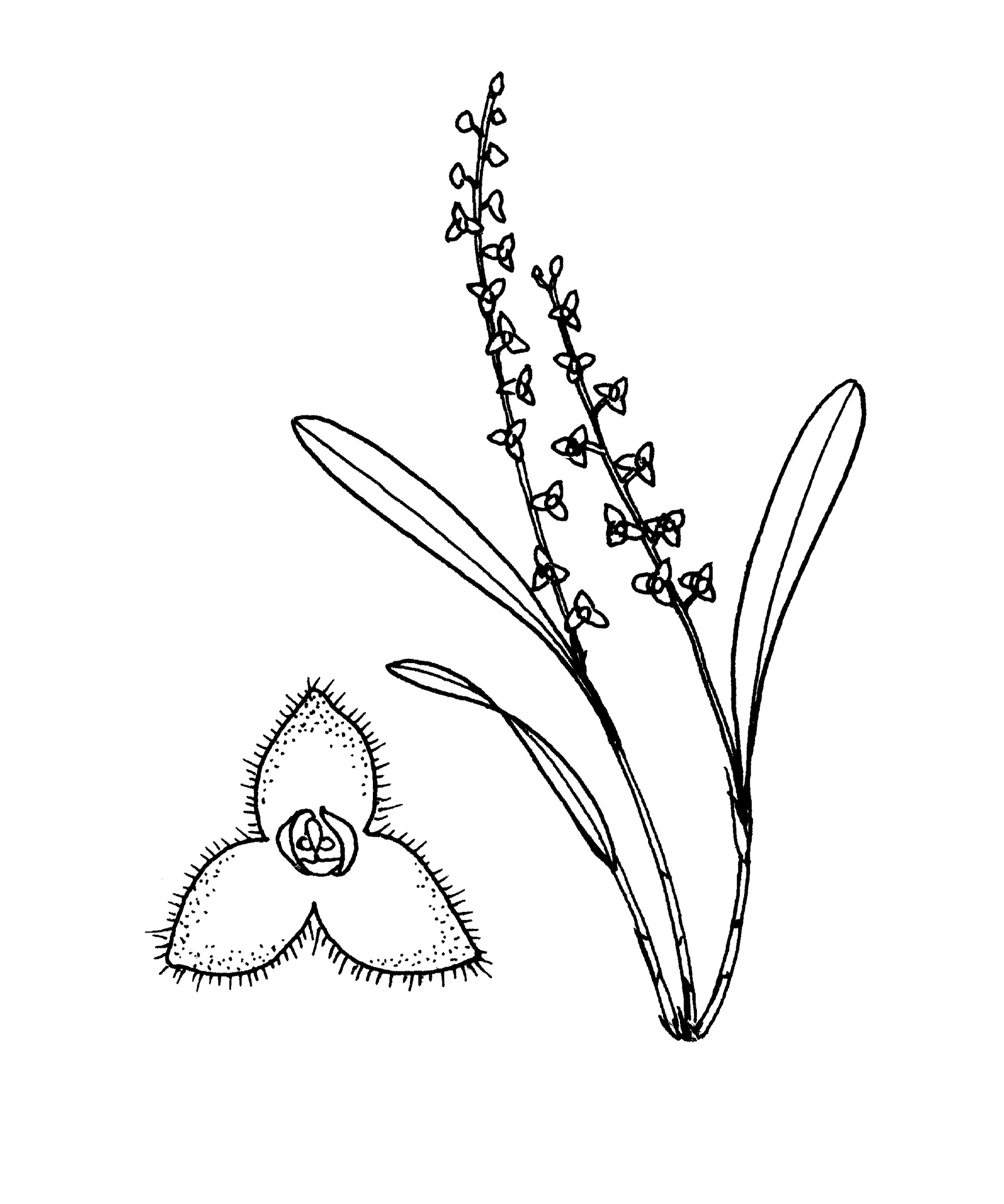
Greek stelis − little pillar; a word used by the ancient Greeks for the mistletoe which, like Stelis species, grows on trees.
Epiphytic or epilithic herbs, sympodial, with short creeping rhizomes. Stems not thickened into pseudobulbs, tufted, erect, sheathed. Leaves apical, solitary, leathery to fleshy, narrow or broad, stalkless or stalked. Inflorescences terminal racemes, slender, often 1-sided, erect or arching. Flowers resupinate, many, minute to small, variously coloured. Sepals similar, dorsal sometimes longer than laterals, partly joined at base, spreading. Petals minute, incurved around column and labellum. Labellum minute, entire or 3-lobed, fleshy. Column short, trilobed at tip. Pollinia 2, waxy.
About 500 species from Mexico to Brazil and West Indies.
Usually small tufted plants lacking pseudobulbs; the small flowers are dominated by the sepals and are more or less triangular in outline.
Source: (2005). Orchidaceae. In: . Horticultural Flora of South-eastern Australia. Volume 5. Flowering plants. Monocotyledons. The identification of garden and cultivated plants. University of New South Wales Press.
